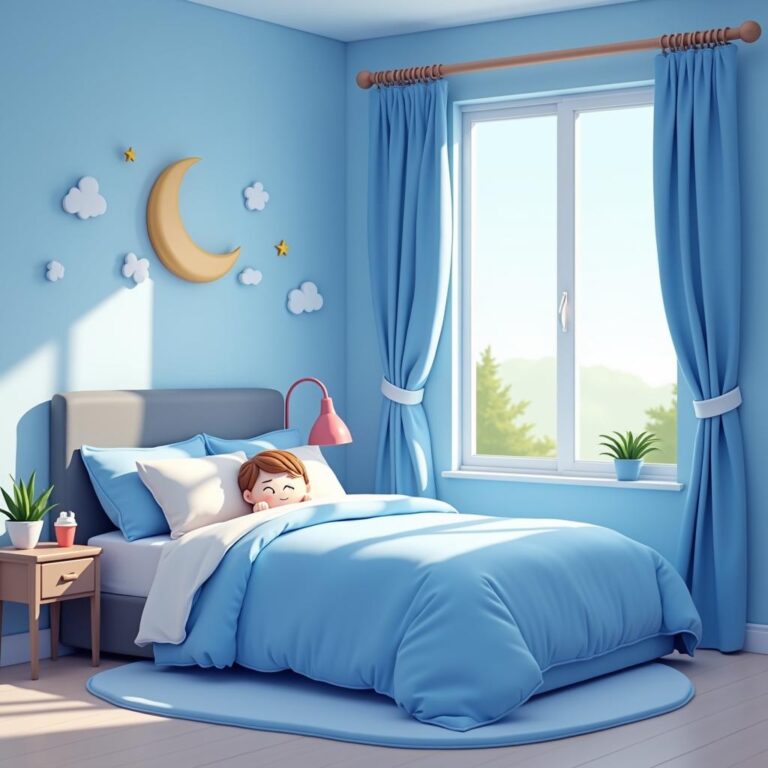Creating an environment that promotes restful sleep is essential for both physical and mental well-being. One of the most significant factors influencing your sleep quality is the arrangement of your bedroom. Here are some proven strategies on how to arrange your bedroom for optimal rest.
Understanding the Importance of Bedroom Arrangement
The way you arrange your bedroom can affect your mood, productivity, and sleep quality. A cluttered or poorly organized space may lead to stress and anxiety, making it difficult to unwind at the end of the day. To enhance your sleep environment, consider the following steps to create a serene and restful space.
Assess Your Bedroom Layout
Begin by assessing your current bedroom layout. Take a moment to note how the existing arrangement makes you feel. Consider the flow of the room: can you easily navigate from one side to the other? Is your bed positioned in a way that makes you feel secure and comfortable? Identifying these aspects will help you strategically arrange your bedroom for better rest.
Choose the Right Location for Your Bed
The position of your bed plays a crucial role in promoting optimal rest. Here are some tips:
- Place your bed against a solid wall: This provides a feeling of safety and security, crucial for restful sleep.
- Avoid placing your bed directly in line with the door: This arrangement can create a sense of vulnerability.
- Position the bed away from windows: This can minimize disturbances from outside, such as noise and light.
Optimize the Use of Color
The color of your bedroom can impact your mood and ability to relax. Soft, muted colors like blues, greens, and pastels can promote tranquility and calmness. On the other hand, vibrant colors may invoke excitement and overstimulation, which is not conducive to sleep.
- Consider light colors: Light shades can make a small room feel larger and more open.
- Use dark colors wisely: Darker shades can create a cozy atmosphere, but should be balanced with lighter accents.
Declutter for a Calmer Space
A cluttered bedroom can lead to a cluttered mind, making it harder to achieve restful sleep. Here are a few decluttering tips:
- Keep items off surfaces: Clear nightstands and dressers to create a cleaner, more soothing environment.
- Limit decorative items: Choose a few meaningful pieces to enhance tranquility instead of overwhelming the space.
- Organize closets and drawers: A systematic approach to storage can enhance the overall aesthetic of your room and reduce disarray.
Invest in Quality Bedding
Your bedding significantly impacts your sleep experience. Invest in high-quality, breathable materials that promote comfort and relaxation:
- Choose the right mattress: Ensure your mattress is neither too soft nor too firm for your sleeping preference.
- Pillows: Select pillows that provide adequate support for your neck and head, tailored to your sleep position.
- Bedding fabrics: Opt for natural fibers like cotton or bamboo that help regulate temperature and wick away moisture.
Control Light and Noise Levels
Creating a sleep-conducive environment requires control over both light and noise. Implement these techniques:
- Use blackout curtains: These can effectively block out any external light, promoting deeper sleep.
- Consider white noise machines: These devices can mask disruptive sounds, creating a peaceful atmosphere for rest.
- Limit blue light exposure: Turn off devices like smartphones and tablets at least an hour before sleep to enhance melatonin production.
Incorporate Relaxing Aromas
Aromatherapy has been shown to help promote relaxation and better sleep. Consider these options:
- Essential oils: Lavender, chamomile, and sandalwood are known for their calming properties.
- Diffusers: Use an essential oil diffuser to disperse soothing scents throughout the room.
- Fresh plants: Incorporating plants like peace lilies can purify the air while providing a calming presence.
Designate a Sleep-Only Zone
Reserving your bedroom solely for sleep can help condition your mind to relax when you enter the space. Here’s how you can enforce this:
- Avoid electronics: Keep televisions and computers out of the bedroom to reduce distractions.
- Limit work-related activities: Refrain from handling tasks or stress-inducing activities in your bedroom.
- Implement a bedtime routine: Engage in calming pre-sleep rituals, like reading or meditating, to signal your body that it’s time to relax.
Personalize for Comfort
While it’s essential to implement these strategies, adding personal touches can make your bedroom feel more inviting. Here are some ideas:
- Add comfortable seating: A cozy chair or nook can serve as a reading or relaxation space.
- Incorporate personal decor: Display photos or artwork that brings you joy and tranquility.
- Choose ergonomic furnishings: Every piece of furniture should enhance comfort and usability.
Conclusion
Arranging your bedroom for optimal rest involves a combination of strategic placement, thoughtful decor choices, and creating a peaceful environment. By following these guidelines, you can transform your bedroom into a sanctuary that fosters better sleep and enhances your well-being. Remember, a well-arranged bedroom can be your first step toward a more restful, rejuvenating night’s sleep.







